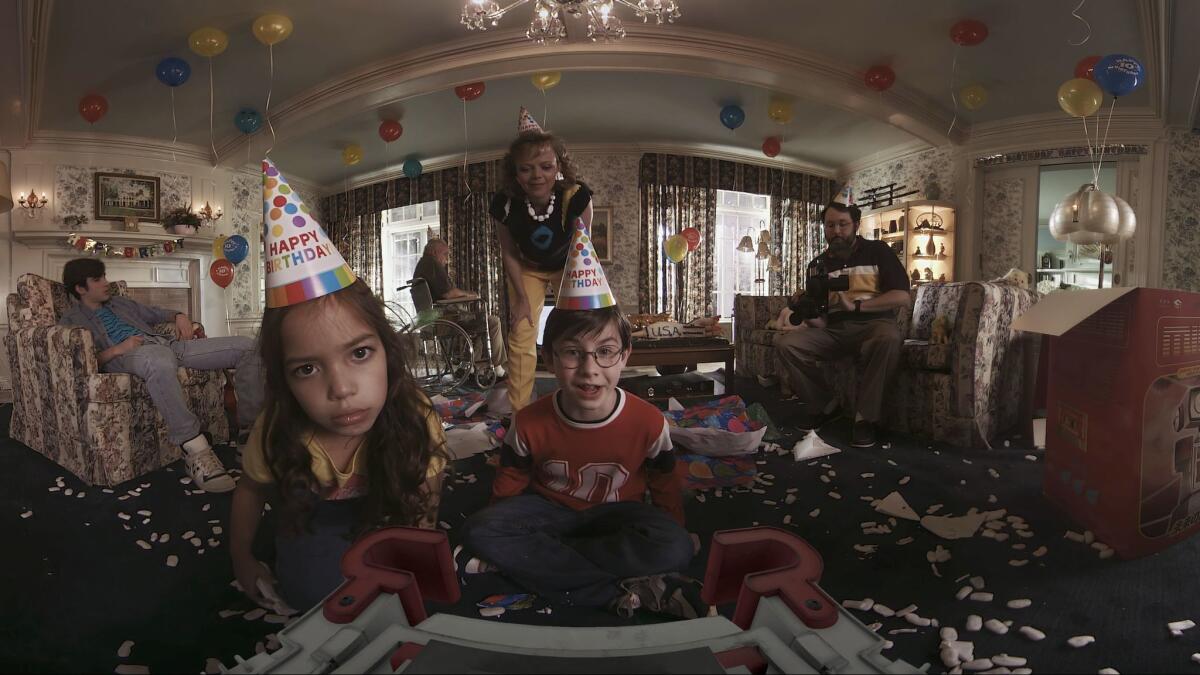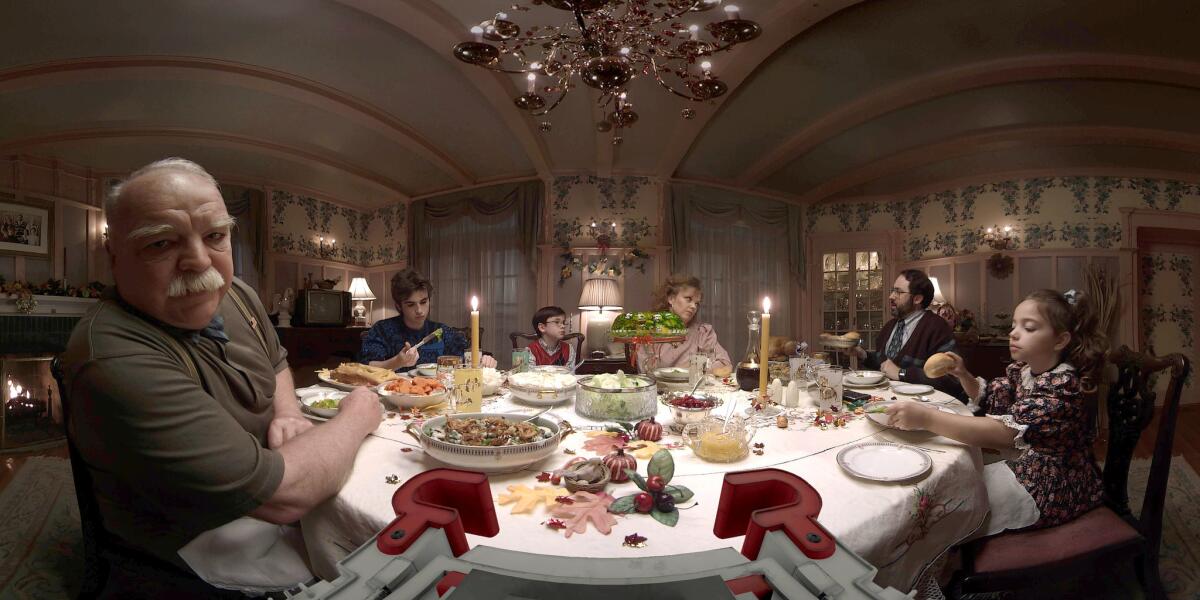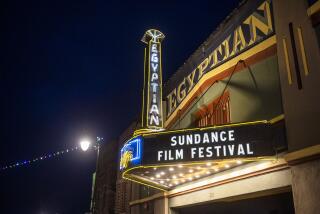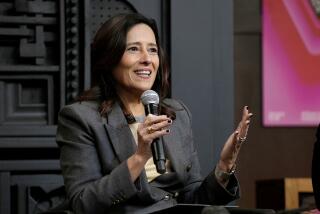In the burgeoning world of virtual reality, storytelling is both cutting-edge and old-fashioned

Over the last several years, the Sundance Film Festival has been an early adopter, and key champion, of bringing virtual-reality content into the world of film. What had once been primarily a gaming movement has evolved into a cinema fixture. Sundance and its New Frontier program are big reasons why.
This year that movement turned up a few notches. The Sundance that ended recently was the first in which VR occupied its own physical space — an intimate venue away from the Main Street tumult called the “VR Palace.” It was, coincidentally, also the first festival in which much of the content can now be viewed broadly, thanks to the release of dedicated headsets such as the Oculus Rift and PlayStation VR in the last year.
Maybe most importantly, it was the first year veteran creators truly began to push boundaries. Nearly every one of the modern VR pioneers — Chris Milk, the directing tandem known as Felix & Paul, Oculus’ in-house filmmakers — brought new content to show off, along with worthy lesser-knowns. Much of it — 16 pure VR pieces at the Palace and about a dozen more with VR components at the mainline New Frontier exhibition — was impressive and instructive. (Many are also available for these new platforms, or can be viewed at an upcoming film festival/tech show.)
Virtual reality is still a ways off from mass consumer adoption. But one of its biggest hurdles — not enough interesting content — is firmly a thing of the past.
Here are seven new pieces that both showcase the range of what the medium can do at present and hint at where it could be going.
“Dear Angelica” (lead artist: Saschka Unseld)
Story Studio, the cinematic-content division of VR headset player Oculus, has been breaking ground from the beginning. The animation pioneer (it’s made up of many Pixar alums) had one of the first narrative films in VR, a distant-planet story called “Lost,” several years back. It won the first Emmy for an original VR piece with “Henry” last year.” And now it has its most ambitious effort, and arguably the most moving tale yet created for VR.
Directed by Story Studio chief Unseld with the help of artists Wesley Allsbrook and Angela Petrella, “Angelica” tells hauntingly of a young woman grieving the loss of her actress mother. She describes how she now watches her mom’s movies to bring her memory back, then feels the sense of emptiness when the images flicker off. The story is a potent one, about love and loss, parent and child.
But it’s the way content merges with form that makes “Angelica” so notable. Using an illustration tool called Quill designed for this film (Oculus will now make it available for other creators), “Angelica” tells its story with swirling colors and vivid dimensionality. There’s the opportunity to — quite literally — walk in and around images as they move slowly enough to allow you to inhabit the world. Unlike many VR pieces, you’re not just inside the film, you’re crawling around in a character’s mind. Also present is a dizzyingly beautiful sense of scale; shapes slowly enlarge and diminish as the story unfolds.
In “Angelica’s” most powerful moment, an astronaut is seen floating away, capturing the majesty of life and the melancholy of passing into death. Aesthetics and emotions — two staples of cinema that have yet to become part of VR — are key here. “Memories don’t have linearity; they’re moments frozen in time,” said Unseld, one of the more philosophically inclined of the cinematic VR movement. “We all have them in our lives. And the way we experience VR is not the way we experience the world; it’s more the way we think, our memories. That’s what we wanted to capture.”
“Out of Exile: Daniel’s Story” (lead artist: Nonny de la Peña)
Albert Maysles liked to talk about documentary as primarily an empathy tool. Virtual reality takes that idea and ups the ante. And few can throw down with empathy like De la Peña.
Known as the godmother of VR, De la Peña helped create the medium, inventing headset tech at a USC lab. (She now runs her own show over in Santa Monica.) The early days were MacGyver-ish — it wasn’t that many years ago when she had to rig up sensors and run alongside the user to allow the kind of free-range movement that is now becoming de rigueur.
One element that’s constant, though: De la Peña’s interest in the medium as a way for ordinary people to understand conflict points. While past pieces have dealt with outbursts of physical violence — the Syrian Civil War, a confrontation on the Mexican-U.S. border — the creator has, with her new piece, shifted her focus.
In “Exile,” she tells the real-life story of Daniel Ashley Pierce, who faced verbal and physical abuse from his family after he came out to them. Using audio from Pierce himself, it drops you into the living room during the confrontational moment, your head whipsawing between Daniel’s heartfelt announcement and his relatives’ unsympathetic reaction. Deceptively simple in concept, it puts you inside conflicts still sadly ongoing for many Americans.
“Documentary is about explosiveness abroad but also at home, and VR is a great way to show that,” De la Peña said. Then, noting the timing on which she was giving the interview — the same morning as the presidential inauguration — she added, “Yes, now more than ever.”
“Life of Us” (lead artists: Chris Milk, Aaron Koblin, with music by Pharrell Williams)
You could use all the words in the world to describe this gleeful riff on evolution and still feel as inadequate as a Homini seeking a second stick for a fire.
Chris Milk helped kick off the VR-indie film crossover years ago with such early pieces as “Evolution of Verse,” “Clouds Over Sidra” and a nifty Beck concert he filmed by rigging his own cameras. These days he oversees Here Be Dragons, a VR production company, and Within, the distribution side of the business. None of that insider-speak will prepare you for this goofy-but-heady experience in which you and a partner in adjacent rooms basically go from early forms of life to futuristic robots.
There isn’t a ton of narrative, more of a chronology, as the seven-minute piece allows you to begin moving first as simple organisms, then to more ape-like beings, then birds, then humans, then whatever comes next, as the experience has you crawling, scampering, running and flying alongside a partner. You can communicate with said partner: they’re in an adjacent room but you hear them and they you, in voices that take in the qualities of the creature you’re inhabiting at that moment in evolutionary times.
Sound trippy? Well, sound is also trippy--since shouts open up certain experiences, there are noises and screams and squeals. And that was just those coming from this reporter.
Technologically speaking, “Life of Us” shows what’s possible in a sweeping, and tandem, VR experience. More conceptually? The idea is to use the medium to give you a playful, macro view of where we’re headed as a species. Or as the creators put it in their mission statement: “This shared VR journey tells the complete story of the evolution of life on Earth.”
“Heroes” (lead artist: Melissa Painter)
One of the essential questions in the VR movement is how it will fit with so-called AR. Augmented reality is a kind of hybrid VR — it uses glasses to allow the sight of computer-generated images but still affords you the ability to see the real world simultaneously.
That complementary dynamic is manifest in “Heroes” a new piece by Painter, an “innovation strategist” (drop that job title at a cocktail party) at the design studio MAP.
Working with Laura Gorenstein Miller’s Los Angeles-based Helios Dance Theater and shooting in spaces around the city, Painter has created a new take on live performance. A more traditional VR piece allows you to watch a pair of particularly acrobatic dancers from a multiplicity of angles, including a swimming pool and a theater stage.
The AR component, meanwhile, pushes boundaries. The tech is still being ironed out, but the possibilities are intriguing: “Heroes” has you entering a room and conjuring up those same young dancers from the VR pieces, this time as holograms with the help of a variety of voice commands. You can multiply them as they’re spinning all around you. At one point you can even shrink the kids and have them dance in your hand.
But the point here is more than just giving you that Rick Moranis feeling. The idea of a dance performance that can happen in a room only for you, and customized to your (sometimes surreal) specifications, prompts conceptual questions: about the relationship between performer and audience, between disembodied VR consumer and the qualities of physical performance.
“Dance and sports, as two forms that have never let go of the idea of extreme human physical/athletic potential, have a lot to teach us in this moment about the importance of being embodied,” Painter said, “They can help remind us how to design technological experiences and entertainment experiences that don’t divorce us from our minds or our bodies.”
“Tree” (lead artists: Milica Zec, Winslow Porter) and “Mindshow” (lead artists: the Mindshow staff)
On the surface these two wouldn’t seem to have much in common. The first is an environmentally themed piece about the importance of trees. The latter is a storytelling tool that allows everyday people to become VR directors by creating characters and reaction shots.
But both underscore a key point: The virtue of VR is its ability to make the viewer a story driver. That’s often spoken of in more incidental terms, like where the viewer looks. But these pieces show that a viewer’s actions can also change what they’re experiencing.
In “Mindshow,” the tool allows you the ability to select reactions and then embed them into a story line; one demo has you alternately playing a captain and an alien in their first encounter; how you choose behaviors for each one informs how the scene plays out.
“Tree, from the duo that offered the powerful war experience “Giant,” tracks you as you move from a seed under the ground to a towering sentry of the rainforest, and eventually become a logging casualty. Notably, your movement changes the story: hold out your arms, for instance, and birds will land on them. “How much you want to interact will change what you feel,” said Zec.
Many consumers are still getting used to just wearing VR headsets. But both “Tree” and “Mindshow” demonstrate that there’s room in the medium for viewers to do a lot more than adjust the focus.
“Miyubi” (lead artist: Felix & Paul)

What’s that old line, the more rules you have the less you follow? For years VR was thought of as a medium of “couldn’t’s:” You couldn’t tell linear stories, you couldn’t do comedy, you couldn’t put people under the headset for more than 15 minutes.
Félix Lajeunesse and Paul Raphaël, the Montreal-based duo who go by the collective name Felix & Paul and who created some of the first VR pieces for Hollywood movies (“Jurassic World” and “Wild”) are here to flout all of that.
For their new piece, they partnered with Funny or Die and its editor in chief Owen Burke for a 40-minute dramatic comedy featurette that is one of the most traditional stories told in VR, and certainly one of the longest. A child in early 1980s suburbia receives a toy robot; overjoyed, he begins bringing him everywhere — to class, to his room, to family dinners. The robot obliges by performing tricks that are pretty nifty circa the first Reagan administration. Oh, and did we mention you’re seeing the world through his eyes?
“We’re just starting to figure out how to suspend disbelief in VR, which is something we’ve known in cinema for a long time,” said Raphael. “And one way to do that is to give you a sense of presence, to make you feel like you’re a part of what’s happening.”
“Miyubi” is a story of obsolescence and childhood, boosted by a very clever meta in-joke — that we are experiencing a story of a doomed cutting-edge technology through a device that will no doubt one day be viewed the same way.
But back to the present. Were they worried about the length, traditional narrative and all the other non-VR forms they’re trying in VR?
“I think we would do two hours if the story demanded it,” Lajeunesse said. “When you shatter a barrier and cross frontiers you say ‘you’re now in this new land. Let’s see what we can find in it.’”
Twitter: @ZeitchikLAT
More to Read
Only good movies
Get the Indie Focus newsletter, Mark Olsen's weekly guide to the world of cinema.
You may occasionally receive promotional content from the Los Angeles Times.







